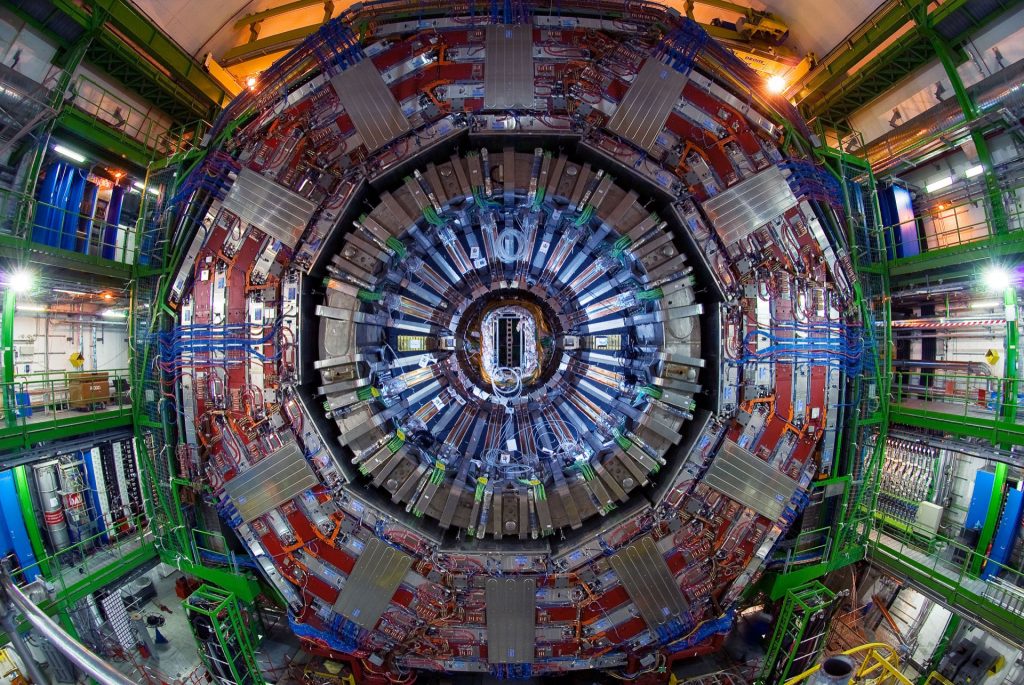The Large Hadron Collider (LHC) at CERN in Geneva is the biggest particle accelerator in the world. It has a total length of 27 km and is placed 100 meters underground between France and Switzerland. This accelerator is able to produce proton collisions at an energy of 14 TeV in four different points. Around each point an experimental area has been built with the goal to detect the products of proton collisions.
The CMS experiment (Compact Muon Solenoid) is one of the four experiments around the interaction points of LHC. The experimental program of CMS is wide-ranging, namely it is built to study all possible phenomena that could occure during a proton collision at the huge energies produced in LHC.
CMS is composed by several layers of detectors surrounding the collision point and that work as a enormous and complex 3-dimensional “camera” with 140 million channels and able to shot 40 million “pictures” per second (as many as the proton collisions in LHC).
The scientific program of the CMS experiment includes, among others, the study of the characteristics of the Higgs Boson, the search for dark matter particles and any possible sign of anomalies with respect to the present theoretical picture, the “Standard Model”.
To face up this ambitious research program, the experimental apparatus is composed by a series of devices around the interaction point and immersed in a magnetic field of about 4 Tesla (as a reference, the magnetic field of the Earth is 80000 times lower).
Starting from the innermost device, the CMS experiment is made of:
- the central tracker: composed by silicon chips able to reconstruct the particle crossing points with a precision of few cents of millimeter.
- the hadronic and electromagnetic calorimeters: that measure the energy of all hadronic particles (made of quarks), electrons and photons.
- the muon detector: composed by 200000 channels to reconstruct the muon trajectory.
The CMS group of Frascati National Laboratories (LNF) has been collaborating to the experiment since 2002 and has been deeply involved in the construction of the muon detectors.
Muons are the most “shy” particles (apart from the elusive neutrinos) in the particle landscape. These particles cross all the innermost detectors and reach the outermost layer of the experiment where their trajectory is reconstructed by the muon devices. As these detectors are the outermost, they have to cover a vast area (a few thousands of square meters).
The LNF group has participated to the construction, test and development of the monitor systems of the RPC (Resistive Plate Chambers) and GEM (Gas Electron Multiplier) detectors that, with different characteristics, reconstruct the particle crossing and identify remarkable events.
The LNF group is highly involved in the detector upgrade activities that will face up new challenges in the future. In particular, the muon detection system will be integrated with the new GEM detectors in those regions where the intensity of the radiation produced by the accelerator will be higher and CMS LNF group will partecipate in the construction and tests of these new detectors.
 INFN-LNF Laboratori Nazionali di Frascati
INFN-LNF Laboratori Nazionali di Frascati
